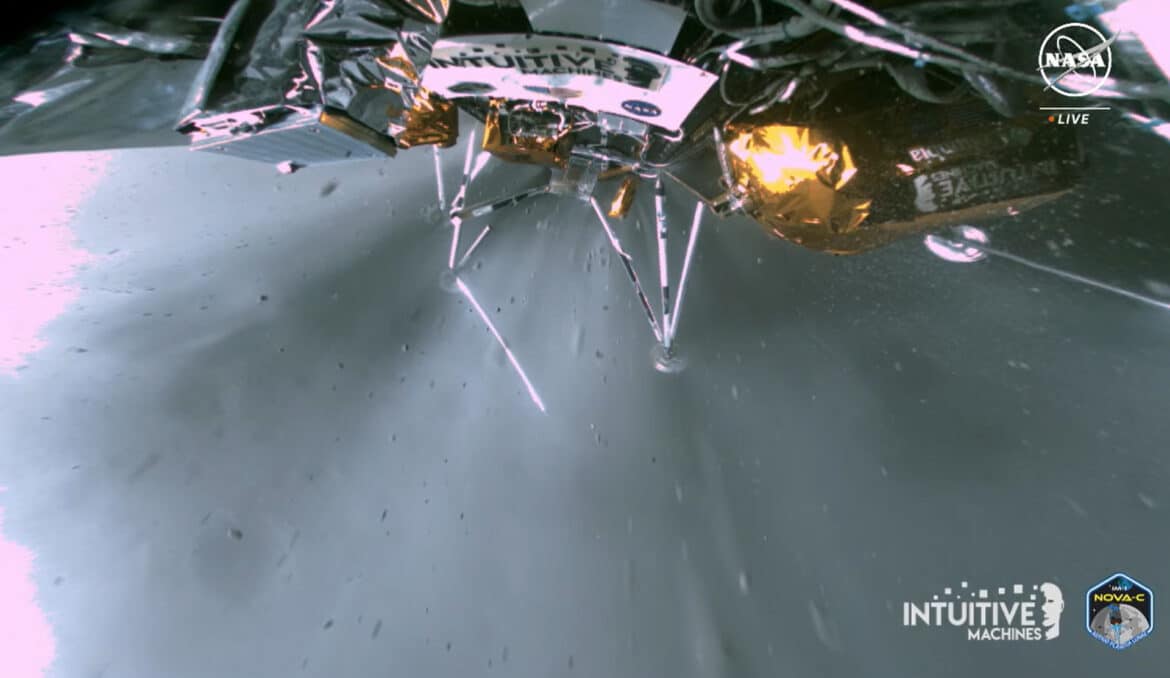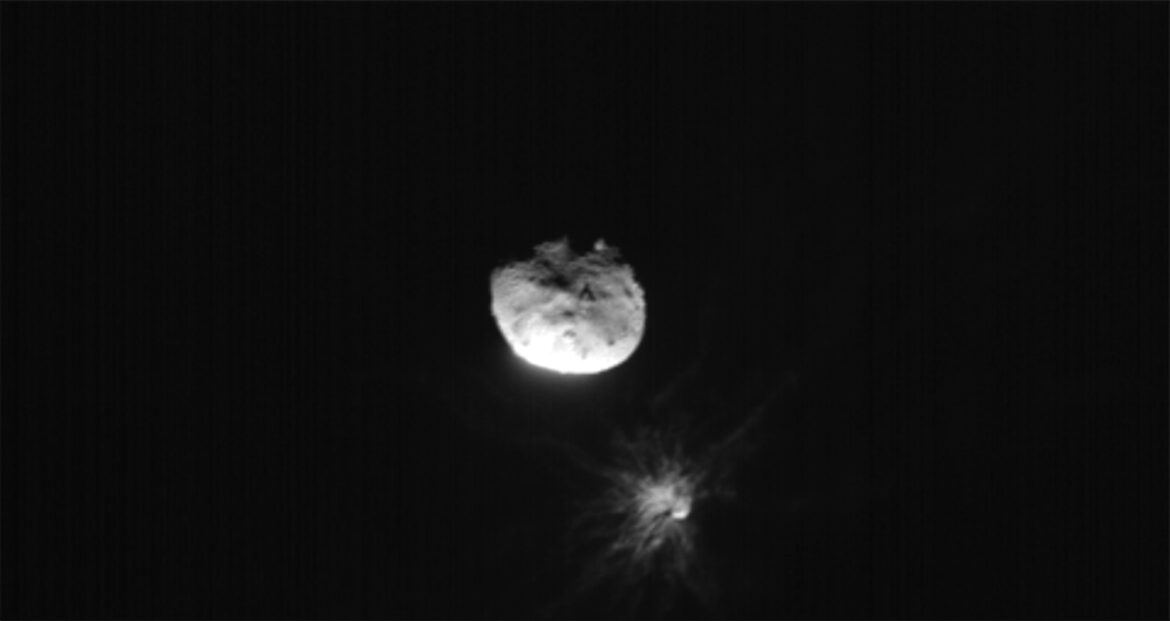
Share
Published on 12 October 2022
First observations confirm the success of the impact of the DART probe on Dimorphos. The orbit of the small moon of the asteroid Didymos indeed now lasts 32 minutes less than before the impact.

September 26 at 11:14 p.m. Universal Time (two hours later in mainland France), the DART probe, weighing approximately 500 kg, struck Dimorphos at a speed of 23,760 km/h. The stated objective of this NASA mission was to modify the orbit of this small moon.
160 m wide, Dimorphos revolves around Didymos, a 780 m asteroid discovered in 1996. The pair circle around the Sun and do not threaten our planet. The September 26 impact took place 11 million kilometres from Earth.

The DART collision on Dimorphos caused a plume of dust captured by the small Italian satellite LICIACube released by the NASA probe a few days before. In the middle of the image, the asteroid Didymos and Dimorphos below.
Credit: ASI / NASA
By working on the LICIACube images, scientists were able to extract data detailing the impressive ejecta caused by the DART impact (photo below).

The rectangles are explained by different contrast settings in order to better show the plumes coming from Dimorphos after DART crashed on this small moon.
Credit: ASI / NASA
In the days that followed, several observatories scrutinised the consequences of this collision, particularly to determine with precision the orbit of Dimorphos around Didymos.

This radar survey of the pair Didymos and Dimorphos was obtained by combining observations from the radio telescopes at Goldstone in California and Green Bank in West Virginia. The light blue circle shows the expected position for Dimorphos if its orbit had not been altered . The green circle indicates the observed position of the moon. Therefore DART has indeed modified the orbit of Dimorphos.
Credit: NASA/Johns Hopkins APL/JPL/NASA JPL Goldstone Planetary Radar/National Science Foundation ‘s Green Bank Observatory
The radar observation shown above is not the only one DART mission officials relied on. However, the conclusions are the same: the 11 hour and 55 minute orbit of Dimorphos around Didymos is now 11 hours and 23 minutes, a reduction of 32 minutes!
When presenting the mission, NASA most often referred to 10 minutes as the reduction in Dimorphos’ orbit time. The 10 minute figure was actually a value within a range derived from complex calculations. The result of 32 minutes is also within this range. However, this is an orbit modification towards the top of the possibilities, the minimum being 72 seconds. NASA estimates that DART exceeded the lowest expected result by a factor of 25 (below, a video recording of the October 11 press conference announcing these figures).
DART thus validated a deflection method that could be implemented if an object one day threatens our planet. If the modification obtained with DART on Dimorphos seems modest, it should be understood that the principle is to apply it to an asteroid which would be detected decades or even centuries before impact. Over time, a tiny alteration in its trajectory would lead to the few thousand kilometres necessary for the Earth to be unaffected.
This logic is explained in the IMAX film Asteroid Hunters 3D presented at Cité de l’espace in Toulouse. Below, the trailer in English (the film is in French at Cité de l’espace ) .
In October 2024, the European Space Agency (ESA) will send the Hera probe to the Didymos-Dimorphos binary system (expected arrival in September 2026) which will examine in detail the consequences of the impact of DART, providing additional data for this logic of protecting the Earth.

This image from the Hubble Space Telescope on October 8 shows the tail of debris caused by the DART collision on Dimorphos. Other observations will be carried out in order to examine the behaviour of this cloud of debris (which does not present any danger to the Earth).
Credit: NASA/ESA/STScI/ Hubble